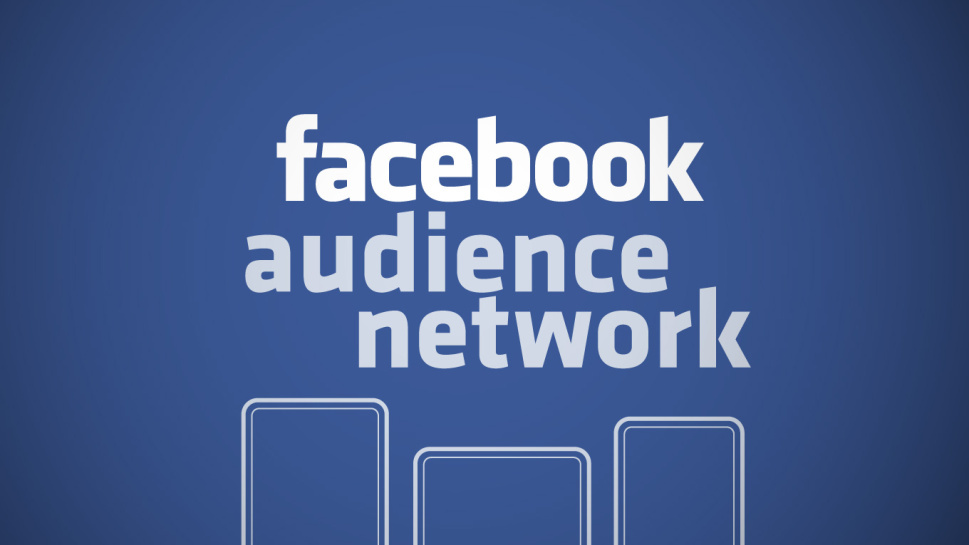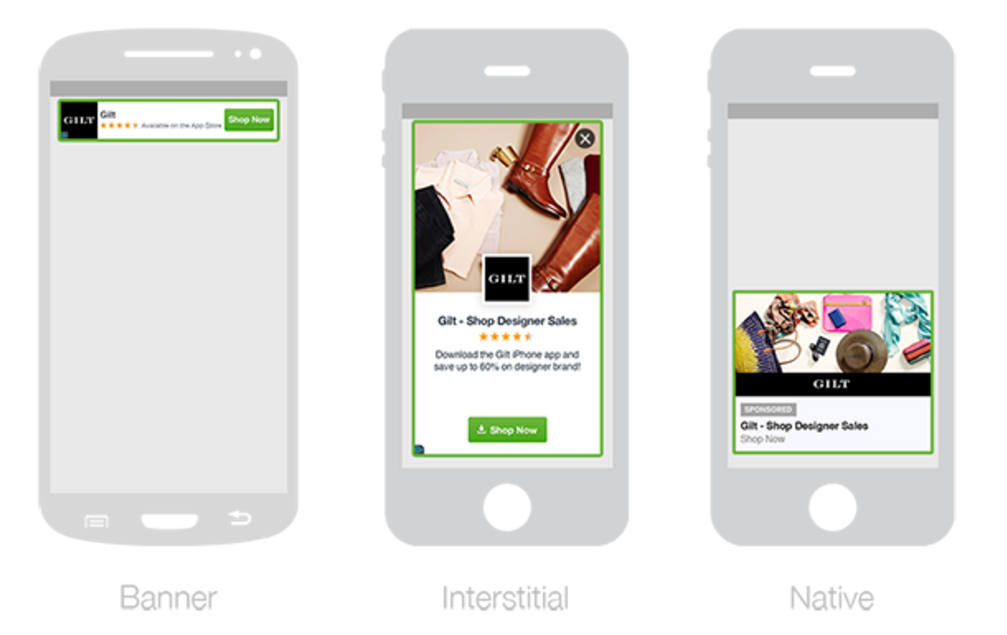Facebook Audience Network - a new word in the monetization of sites and applications
In the monetization of their resources, owners actively use affiliate advertising systems. Traditionally, the leaders are Google Adsense , AdMob and the Yandex Advertising Network (YAN). Recently Facebook advertising system (FAN) has been modernized and is showing activity on Facebook advertising system. Therefore, I am writing about its novelty, although this network appeared several years ago. It has a number of unique features, consider them in detail.

This is a Facebook offensive beyond the limits of its ecosystem, involving external players in it. At the same time, the bet goes to the mobile segment of the Internet. In fact, its advertising network is advancing on Google’s field and will compete with it. And in the Russian market also with YAN.
Facebook closes the circle: user - content - advertising. At the same time, it stimulates generators and content owners to work with it. As we know, Facebook has no shortage of visitors and advertisers. In addition, he has great opportunities for targeting, knowing well the profile of everyone in his network. So that strategy looks promising.
')
The main schemes are three:
The third part makes the system special, it is worthwhile to stop there. The whole process has a rather complicated mechanics:
In the implementation of the scheme is complicated, for the user everything is much simpler - clicked on the title, the post was opened. And on the external site, or inside the application, you can not overlook it.
On the system website:

Real ads look like this:

The main focus is on the native format, in the picture on the right. It mimics the content, i.e. his styles adapt to the design. It is worth noting the small horizontal lines and indents, which is convenient for insertion between articles and in the gap content.
Banners are more standard, their styles do not change.
Rectangular format traditionally works well on mobile devices. It is a bit like a mobile unit 320x250 in Google Adsense, perceived organically. In addition to image ads in the same blocks, video ads can be shown.
From the blocks there are three types of links:
Those sites and applications that have a large mobile traffic. Especially sites with a high share of Facebook traffic, for example, with viral and news content.
In the future, you can include bloggers / owners of groups here to monetize content inside Facebook. How it will work will see as the partners connect.
Up to $ 1 per thousand page views, which is generally not bad. But, in my experience, the right combination of Adsense and YAN can give more. FAN cannot yet be considered as a replacement for existing systems, rather as their complement.
As usual, there is a lot of bureaucracy in a big company. The form for registration and receipt of payment account is large, waiting for approval for more than a month. Try to implement the code and estimate the potential income a little easier. But, it is still more complicated than any other system. Work with mobile sites in the developer section is marked as closed beta testing. This means that the system is under development and the rules are subject to change.
+ In the block settings, you can insert another code as an alternative. If FAN does not pick up the ad, it will unscrew the code of the other system.
Facebook works well with DFP and other advertising rotation systems. In Google Adsense, there is no possibility to insert an alternative code, only a blank image. In YAN, there is such an opportunity, but it will not allow its code to be embedded into third-party systems.
- There are few formats and the appearance of the ad is not customizable. You cannot turn on text or graphic in your account, you cannot change styles.
- Advertising is not shown everywhere and not always. Perhaps this is not yet debugged, but in some browsers ads do not work. Also, after a certain number of hits on the user, the display stops, high coverage is difficult to achieve.
+ Better user targeting. Everyone can compare their interests on Facebook and how Google defines them .
- The main disadvantage for the site owner, if he works according to scheme 3 (without switching, and inside Facebook) - he does not receive traffic. He cannot use the advantages of visiting his site (subscriptions, cookies, saving to bookmarks, etc.).
In addition, user behavior within the application is more linear - he opened the post, read it, and went back. In this way. The number of ad impressions is reduced by the difference in the depth of viewing. For example, if the site has an average of 2 pages per session, and on Facebook 1.5, then the income should be divided by 1.3.
FAN is worthy of attention and tests, has already taken its place in the market, but this is only the beginning. It will be especially interesting when Facebook will allow Google to embed Google ads inside its ecosystem and expand the range of formats.
At the moment, FAN can give 10-30 percent of income to the site owner and its share will grow. Also, this is a good way to make money on content for those who are not very active site / application, but have a good Facebook audience. In this direction, everything is just beginning, and this may seriously change the Internet landscape in the coming years.
All good monetization!

Concept
This is a Facebook offensive beyond the limits of its ecosystem, involving external players in it. At the same time, the bet goes to the mobile segment of the Internet. In fact, its advertising network is advancing on Google’s field and will compete with it. And in the Russian market also with YAN.
Facebook closes the circle: user - content - advertising. At the same time, it stimulates generators and content owners to work with it. As we know, Facebook has no shortage of visitors and advertisers. In addition, he has great opportunities for targeting, knowing well the profile of everyone in his network. So that strategy looks promising.
')
How does it work?
The main schemes are three:
- With external applications.
- With external sites.
- Inside Facebook, without logging out
The third part makes the system special, it is worthwhile to stop there. The whole process has a rather complicated mechanics:
- The site gives Facebook content in a special format, with strict requirements for design, content and code. The format somewhat resembles RSS for Yandex news.
- Facebook indexes it.
- The owner of the site / application creating a post (manually or automatically) can send traffic not to his site, but to a special Facebook application space.
- In this case, the post will open without exiting the facebook application. It will be standardized and advertising will be embedded in it. Loading the post will happen almost instantly from the application cache.
In the implementation of the scheme is complicated, for the user everything is much simpler - clicked on the title, the post was opened. And on the external site, or inside the application, you can not overlook it.
Formats and appearance
On the system website:

Real ads look like this:

The main focus is on the native format, in the picture on the right. It mimics the content, i.e. his styles adapt to the design. It is worth noting the small horizontal lines and indents, which is convenient for insertion between articles and in the gap content.
Banners are more standard, their styles do not change.
Rectangular format traditionally works well on mobile devices. It is a bit like a mobile unit 320x250 in Google Adsense, perceived organically. In addition to image ads in the same blocks, video ads can be shown.
From the blocks there are three types of links:
- on the advertised site,
- to the app store, if this is an app advertisement,
- link to another application with automatic opening on the desired page.
Who is more suitable?
Those sites and applications that have a large mobile traffic. Especially sites with a high share of Facebook traffic, for example, with viral and news content.
In the future, you can include bloggers / owners of groups here to monetize content inside Facebook. How it will work will see as the partners connect.
How much does it give?
Up to $ 1 per thousand page views, which is generally not bad. But, in my experience, the right combination of Adsense and YAN can give more. FAN cannot yet be considered as a replacement for existing systems, rather as their complement.
Registration and withdrawal of money
As usual, there is a lot of bureaucracy in a big company. The form for registration and receipt of payment account is large, waiting for approval for more than a month. Try to implement the code and estimate the potential income a little easier. But, it is still more complicated than any other system. Work with mobile sites in the developer section is marked as closed beta testing. This means that the system is under development and the rules are subject to change.
What are the disadvantages and advantages compared with Adsense and YAN?
+ In the block settings, you can insert another code as an alternative. If FAN does not pick up the ad, it will unscrew the code of the other system.
Facebook works well with DFP and other advertising rotation systems. In Google Adsense, there is no possibility to insert an alternative code, only a blank image. In YAN, there is such an opportunity, but it will not allow its code to be embedded into third-party systems.
- There are few formats and the appearance of the ad is not customizable. You cannot turn on text or graphic in your account, you cannot change styles.
- Advertising is not shown everywhere and not always. Perhaps this is not yet debugged, but in some browsers ads do not work. Also, after a certain number of hits on the user, the display stops, high coverage is difficult to achieve.
+ Better user targeting. Everyone can compare their interests on Facebook and how Google defines them .
- The main disadvantage for the site owner, if he works according to scheme 3 (without switching, and inside Facebook) - he does not receive traffic. He cannot use the advantages of visiting his site (subscriptions, cookies, saving to bookmarks, etc.).
In addition, user behavior within the application is more linear - he opened the post, read it, and went back. In this way. The number of ad impressions is reduced by the difference in the depth of viewing. For example, if the site has an average of 2 pages per session, and on Facebook 1.5, then the income should be divided by 1.3.
Perspectives
FAN is worthy of attention and tests, has already taken its place in the market, but this is only the beginning. It will be especially interesting when Facebook will allow Google to embed Google ads inside its ecosystem and expand the range of formats.
At the moment, FAN can give 10-30 percent of income to the site owner and its share will grow. Also, this is a good way to make money on content for those who are not very active site / application, but have a good Facebook audience. In this direction, everything is just beginning, and this may seriously change the Internet landscape in the coming years.
All good monetization!
Source: https://habr.com/ru/post/321640/
All Articles